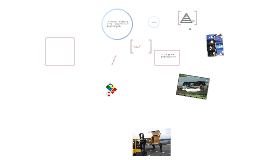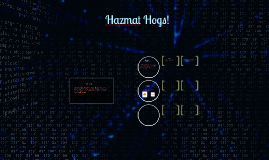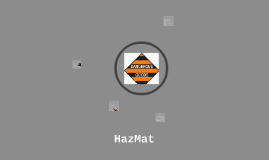Hazmat
Transcript: UN HAZMAT CLASSES 1 CLASS 1- EXPLOSIVES Explosives are classified as dangerous goods because they are capable of producing hazardous amounts of heat, light, sound, gas, or smoke. Commonly transported explosives include: Ammunition/cartridges Fireworks/pyrotechnics Flares Detonators Air bag inflators Igniters Rockets CLASS 2- GASES 2 The class of gases includes compressed gases, liquefied gases, dissolved gases, refrigerated liquefied gases, aerosols, and more. Gases are dangerous because they pose a serious risk as potential asphyxiants and because of their flammability. Some examples include: Aerosols Fire extinguishers Gas cartridges Lighters Acetylene Carbon dioxide Heliums Hydrogen Oxygen Nitrogen Division 2.1: Flammable gases Division 2.2: Non-flammable, non-toxic gases Division 2.3: Toxic gases Flammable liquids are volatile and are capable of giving off a flammable vapour. CLASS 3 FLAMMABLE LIQUIDS 3 Commonly transported flammable liquids include: Acetone Adhesives Paints / lacquers / varnishes Alcohols Perfumery products Petrol Diesel fuel CLASS 5- OXIDISERS & ORGANIC PEROXIDES 5 Substances which can yield oxygen are classified as dangerous goods because, although not necessarily combustible in themselves, they can contribute to the combustion of other hazardous substances. FLAMMABLE SOLIDS 4 Flammable solids are highly combustible and can even cause fire through friction. They are certainly capable of inflicting serious damage. Examples include: Alkali metals Metal powders Sodium batteries Firelighters Matches Carbon Toxic substances are classified for being able to cause serious injury or death to humans if swallowed, inhaled, or by contact with skin. Infectious substances are classified for containing pathogens, including bacteria, viruses, parasites, or other agents which can cause disease in humans or animals upon contact. CLASS 6- TOXIC MATERIALS & INFECTIOUS SUBSTANCES 6 Radioactive materials are defined as any substance which contains atoms that are subject to radioactive decay. Consequently, whilst undergoing radioactive decay, radioactive material can emit potentially harmful ionizing radiation. CLASS 7 RADIOCATIVE MATERIALS 7 CORROSIVE MATERIALS 8 8 Corrosive substances react chemically to damage or destroy material, like living tissue, upon contact. MISCELLANEOUS DANGEROUS GOODS 9 9 As the class name suggests, miscellaneous dangerous goods are substance which present a danger not covered by other classes. According to the U.N., this class includes environmentally hazardous substances, elevated temperature substances, and GMMOs or GMOs.

















